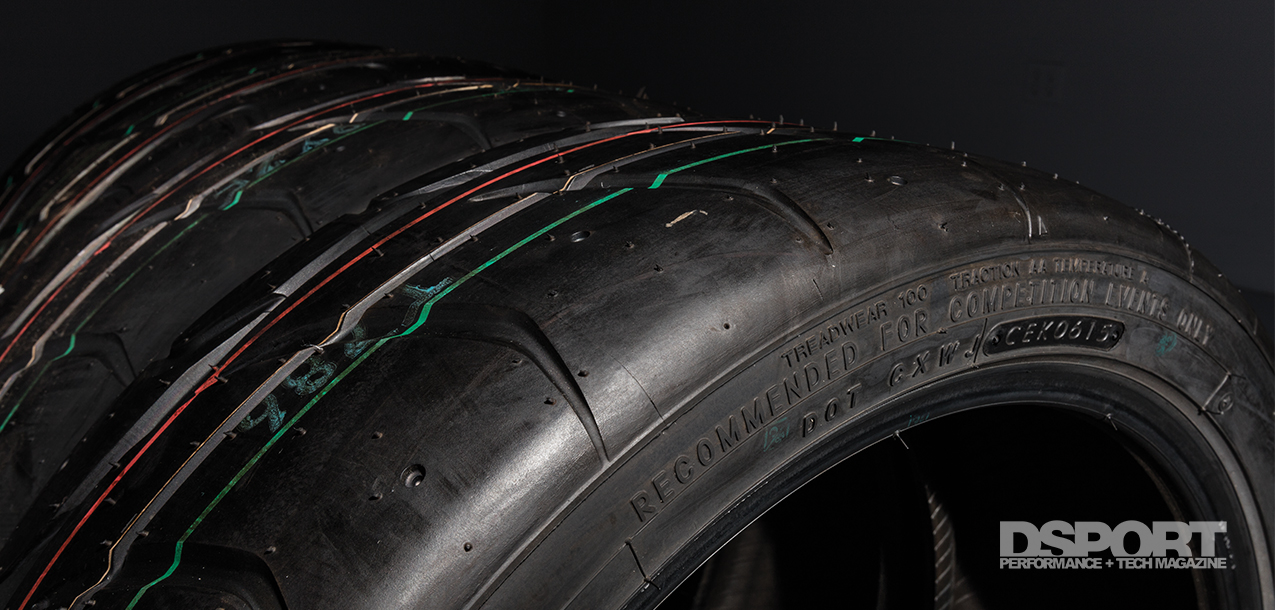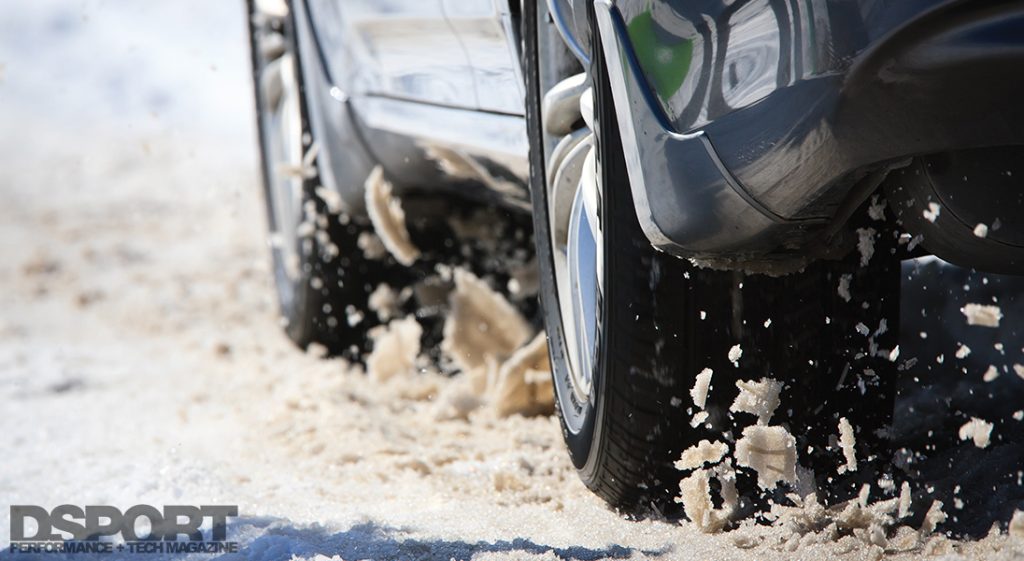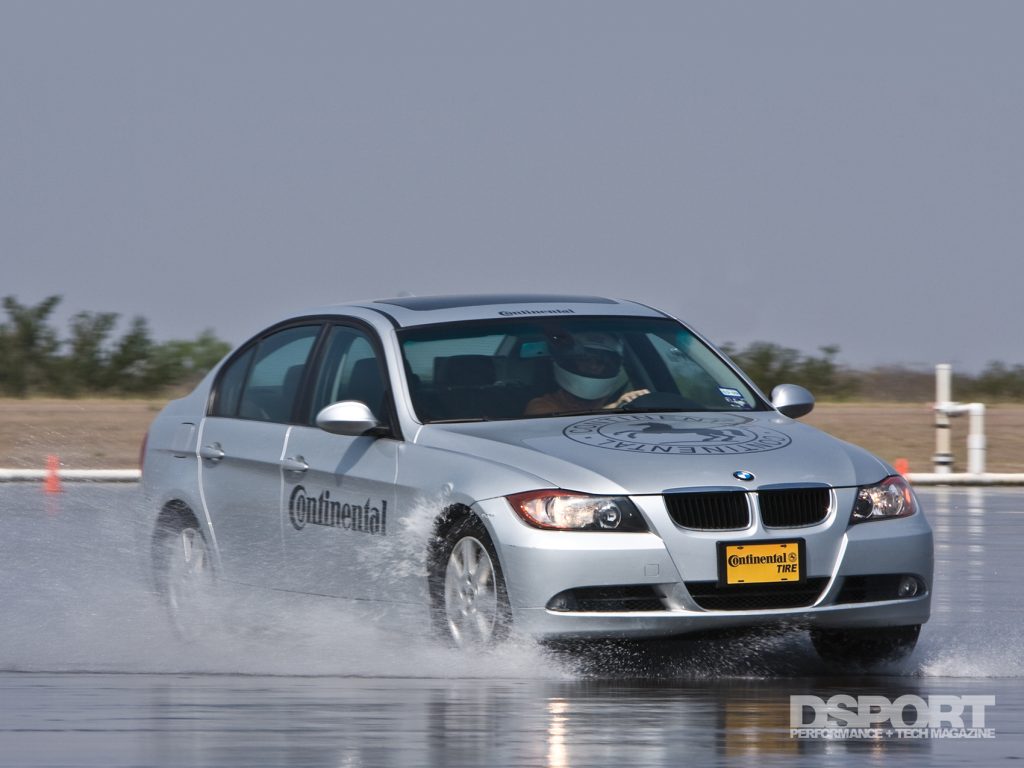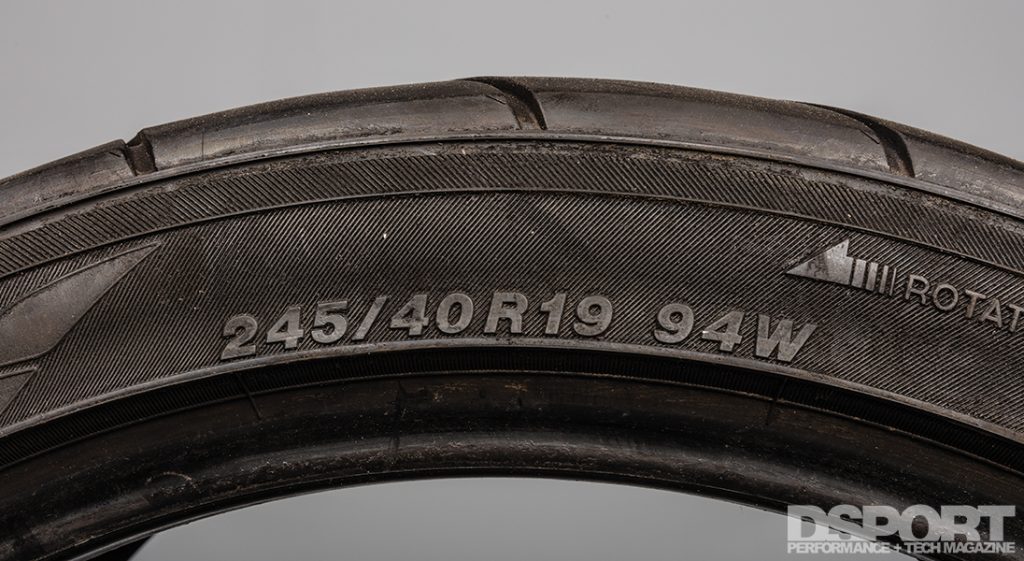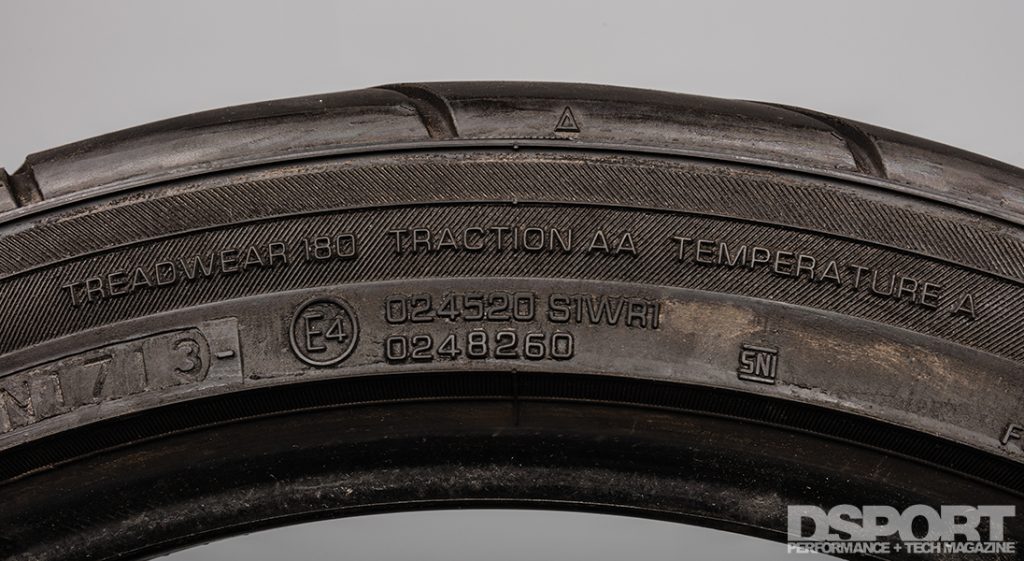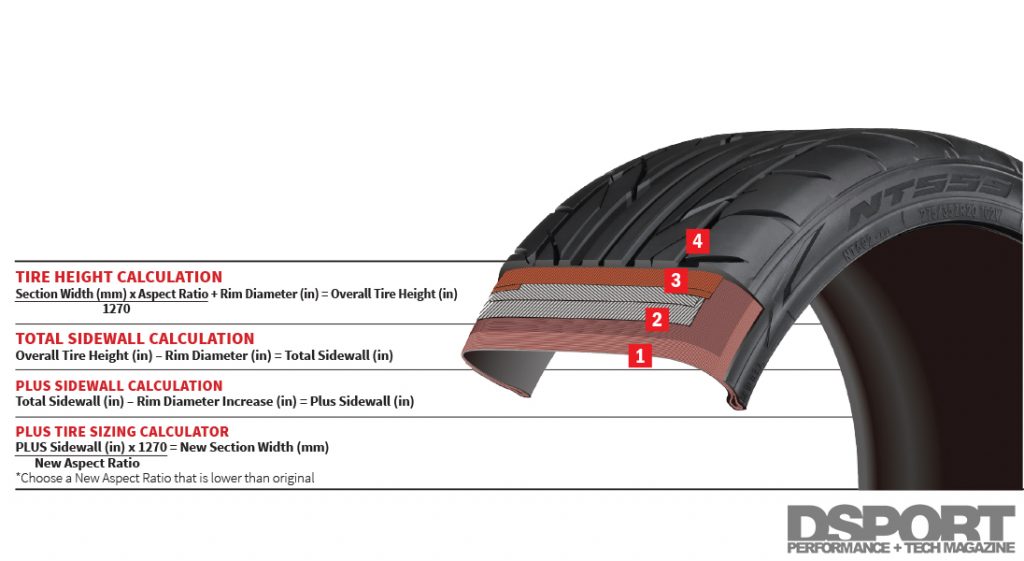It’s surprising how little is understood about tires. Just look at the number of cars with tires worn down to the belts lining up at your local tire shop when the first rain of the season begins to arrive. What’s worse is that some people think tires are just chunks of rubber used to cushion their vehicle’s ride. They couldn’t be more wrong. As the only components that make contact with the ground, tires serve an important role, delivering mechanical grip, comfort and safety.
By Richard Fong
DSPORT Issue #171
The Right Class of Tires
Tires provide mechanical grip (traction) for your car. How well they perform will depend on the tire you select for the road surface and type of driving you intend to do. Each employs a tire compound that is optimized for a given purpose. Generally, harder tire compounds offer less grip but a longer service life. By contrast, softer compounds offer greater grip in exchange for less wear. All-purpose everyday tires go by a variety of names, like All Season (A/S) or Mud and Snow (M+S). These types generally offer superior traction in the rain, snow or mud and a longer service life as well. These also provide adequate grip during the dry season. The summer tire class constitutes the bulk of enthusiast tire solutions, focusing more on dry traction and less on wet traction or longevity. These tires feature a soft compound for improved grip. A step beyond the summer tire is the DOT-R or street-legal racing tire. This variety offers superior dry traction in exchange for limited wet traction and even lesser wear characteristics. They meet the minimum requirements of the Department of Transportation (DOT) for street driving while bridging the performance gap between a street tire and a full racing slick. The last class is the racing tire. These off-road only (not DOT legal for street driving) tires offer the greatest adhesion for track or competition use and typically wear the quickest.
Writing on the Walls
Once you’ve decided what class of tire suits you best, choosing the actual tire comes next. Every tire comes printed with raised lettering on its sidewall. This information tells you much of what you’d need to make an informed decision. However, deciphering the numbers and letters can be a little confusing at first. The larger numbers on the sidewall describe the tire’s dimensions. The first three digits (in millimeters) describe the section width of the tire, while the following two-digit number indicates the tire’s aspect ratio (sidewall height in millimeters) as a percentage of the tread width. The next letter is the tire’s speed rating, denoted by an H, V, W, Y or Z (see Chart 1). The next letter is the tire construction which in most cases is an “R” indicating that the tire is of a radial design. The last two digits describe the rim diameter in inches.
Unstandardized Standards
The UTQG standards mandated by the DOT and NHTSA show up in raised letters on the sidewall of every passenger car tire. Unfortunately, treadwear ratings are not measured against a common standard, rather they are graded by the manufacturers or by a contracted lab. Thus, treadwear is a relative measure within each company’s product line but not an accurate benchmark for comparison across every brand.
Chart 1
Speed Rating Speed(MHP) H 130 MPH V 149 MPH W 168 MPH Y 186 MPH Z > 149 MPH Chart 2
Temperature Grade Speed (MPH) A Over 115 B 100-115 C 85-100 Chart 3
Traction Grade Asphalt g-force Concrete g-force AA >0.54 0.38 A >0.47 0.35 B >0.38 0.26 C <0.38 0.26
The Ratings
Aside from the tire’s dimensions and speed ratings, the other critical information printed on the sidewall appears in fine print. The Uniform Tire Quality Grading (UTQG) standards of the DOT and the National Highway Traffic Safety Administration (NHTSA) include treadwear, temperature and traction ratings that convey vital information about the tire to the end user. Treadwear ratings can range from double digits up to over 500. Unfortunately, this system of rating is not standardized. The government may require that this information be printed on every passenger car tire, but rather than basing the ratings on a universal standard, the ratings on the sidewalls are based on independent testing contracted by each respective tire manufacturer. Thus, a 140 treadwear tire will wear more quickly than a 200 treadwear tire from the same brand. Unfortunately, not all 140 treadwear tires (of identical size) from different manufacturers will perform the same, and a 200 treadwear tire from one company could outperform a 140 treadwear tire from a different brand. This can be viewed as a ballpark figure.
The temperature rating of a tire indicates the extent that heat is generated as well as its ability to dissipate the heat. For a tire to receive an A rating, it must demonstrate the ability to effectively dissipate heat at speeds in excess of 115 MPH. (see Chart 2) All tires sold in the USA must at least pass with a C temperature rating to be legal for street use.
Traction grading, like the other UTQG categories, is also conducted by the tire manufacturer or a laboratory contracted to evaluate the tires. The traction grade is determined by testing the tires on a skid trailer at 40 MPH on wet asphalt and concrete. At 40 MPH, the trailer’s brakes are locked and axle sensors measure the tire’s coefficient of friction as it slides. (See Chart 3)
How Do You Choose?
Choosing the right tires for your car boils down to the purpose they serve. While manufacturers strive to design tires capable of wet and dry traction, comfort, longevity and safety, technology has yet to know one tire capable of excelling in every category. Thus, tires come to the market as a compromise. To start, you’ll want to narrow your focus to a particular class of tire. Of course off-road only racing tires belong on the racetrack or in competition. The same could be said for DOT-R tires, unless you actually need that much traction for street driving and can afford to replace them every few thousand miles. The softer compound of summer tires generally provides better dry performance while an all-season or mud and snow tire might work best if that’s the sort of weather you encounter. Double check the UTQG ratings to be sure that you’re not getting too soft a compound for the street or too hard a compound for a particular competition class. While these tires might be capable of high-speed ratings, the tire compound might be better suited for wet conditions or high mileage while sacrificing traction and cornering performance.
Radial Tire Breakdown
Radial tires can be broken down into four main components. The radial body plies (1) form the backbone of the tire, while the steel belts (2) ensure strength. The nylon overlays (3) encase the belts and defend against tread separation. The tread (4) is what hits the pavement.
Plus-Sized Performance
In addition to selecting brands and tire compounds to improve grip and handling, enhancing the size of the contact patch with the road can also accomplish or further these goals. The contact patch is the amount of tire tread in contact with the road and to get a larger contact patch you’ll need a wider tire. However, in order to increase the width while maintaining the calibration of vehicle sensors, it is important to choose a tire that is of the correct height (as similar to the factory tire height as possible.) Using a series of calculations, you can determine the right tire size to fit your application. This is known as “The Plus System”.
Rims and Rubber
It is sometimes possible to find a wider tire with a shorter sidewall to fit your existing wheel size. This solution is referred to as “Plus Zero” since the rim size does not change. This could be the right solution in the case that your factory wheels are already of an ideal diameter. The popular alternative is to upgrade to a larger, wider wheel with a wider tire and a narrower aspect ratio, known as “Plus One” or “Plus Two” depending on how many rim diameters up you decide to go. First, you’ll determine the overall height of the stock tire, followed by calculating the total sidewall height. Then, after deducting the new rim diameter from the total sidewall height, you’re left with the new sidewall height. Finally, you can calculate the new section width based on a reduced aspect ratio.
Keep in mind that increasing the size of the contact patch comes with additional considerations. On the positive side, increasing the contact patch improves traction and, because of the shorter and stiffer sidewall, the handling becomes more responsive. Potential drawbacks to the wider, lower profile tires include increased road noise and a harsher ride.
Class Standing
The various tire classes are distinguished not only by their tire compounds but also by the shape of their treads. In the case of an all-season tire (1), there are numerous grooves in the tread to facilitate water, mud and snow dissipation. The summer street tire (2) still features rain grooves but more solid blocks of rubber in the shoulder for improved adhesion. The DOT-R tire (3) has even fewer rain grooves and the competition slick (4) has practically no grooves.
Not Created Equal
Tires aren’t just whatever is mounted to your wheels. Just as the UTQG rating is a relative measure within a tire manufacturer’s product line, the difference between tire brands can vary dramatically, depending on the brand of the tire you select. Since the formulation of tire compounds is what separates each tire brand, choosing a tire goes beyond the numbers that manufacturers print on the sidewalls. Quality does vary between brands, and knowing the difference between a good quality tire and a lesser one can sometimes boil down to seeing past the marketing gimmicks.
Bolt-On Basics | Performance Tuning 101
• Air Intake Systems – The Pathway to More Power
• Exhaust Systems – Uncorking Your Engine’s Potential
• ECU Tuning – Harnessing the Power of Technology
• Fuel Systems – Quench Your Engine’s Thirst
• Forced Induction Systems -Boost for Max Power
• Cooling Systems – Less Heat for Longer Life and More Power


